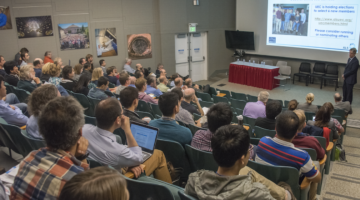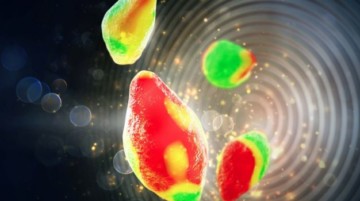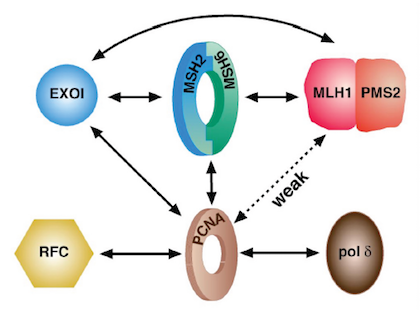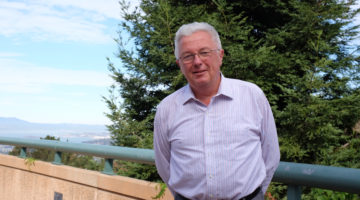The ALS upgrade project (ALS-U) was a focus of this year’s User Meeting, beginning with Laboratory Director Mike Witherell’s announcement that ALS-U has received mission need approval, the first critical milestone in the DOE approval process. Several talks and workshops focused on the engineering aspects of the upgrade and science opportunities it will enable. Read more »
Features
2016 ALS User Meeting Highlights
About 400 ALS users came together at the beginning of the month for the annual ALS User Meeting. Attendees listened to colleagues present their research, took part in scientific workshops, interacted with exhibitors, and recognized this year’s awardees. Read more »
Peering Into Batteries: X-Rays Reveal Lithium-Ion’s Mysteries
Researchers are using the Office of Science’s advanced light sources, including the ALS, to understand why and when lithium-ion batteries in phones, plug-in electric vehicles, and other applications lose charge or fail. Read more »
ALS Brightness Improvement Team wins DOE Achievement Award
Members of the ALS Brightness Improvement Team have been recognized by the Department of Energy with a prestigious Secretary of Energy Achievement Award. This distinction follows the team’s receipt last December of a Berkeley Lab Director’s Award for Exceptional Scientific Achievement. Read more »
Shedding Light on Postdocs
Postdocs are a significant portion of Berkeley Lab’s workforce, and the same is true at the ALS, where 42 postdocs are currently employed by or receiving a stipend from the ALS. To provide a forum and resources for this large contingent at the Lab, the Berkeley Lab Postdoc Association (BLPA) was recently established by a small group of postdocs. Read more »
ALS Engineers Resolve Power Supply Failure, Bring ALS Back Online
On Thursday, July 28, the power supply to the ALS booster bend magnets failed. Over the course of nearly six days, more than 20 ALS staff worked long hours to resolve the failure and get the ALS back online. Read more »
MAESTRO Beamline Set to Open to Users
This September, Beamline 7.0.2, MAESTRO, will accept general user proposals for the first time. Its unique attributes combine strong sample preparation capabilities with cutting-edge spectromicroscopy tools, offering researchers unparalleled opportunities for studying the correlation between structure and electronic properties. Read more »
2015 ALS User Meeting Highlights
The 2015 User Meeting brought together 405 ALS users from around the world, many of whom shared insights and sparked discussion with presentations of their ALS research highlights. Read more »
SIBYLS Beamline Builds on Nobel Research
Often the full impact of a scientific discovery takes decades to realize, during which the research is developed further and adopted by other scientists. Such was the case for the work of biochemist Paul Modrich, one of three recipients of this year’s Nobel Prize in Chemistry. Berkeley Lab’s Advanced Light Source was a core resource Modrich used to build on his earlier work. Read more »
Wolfgang Eberhardt on Light Sources: Getting the Balance Right
Wolfgang Eberhardt, an internationally respected expert on synchrotrons, is wrapping up an extended visit to the ALS. Between experiments furthering our understanding of organic solar-cell materials, he discusses the relative merits of diffraction-limited storage rings (such as the proposed ALS upgrade, ALS-U) and free-electron laser facilites. Read more »









